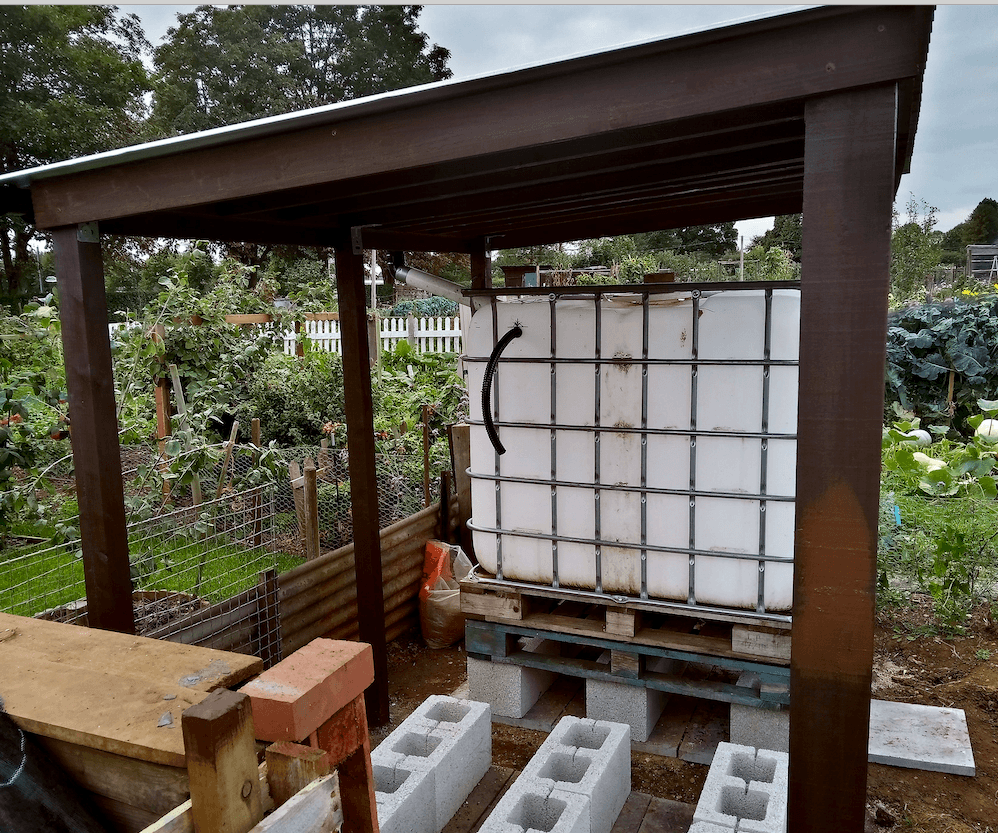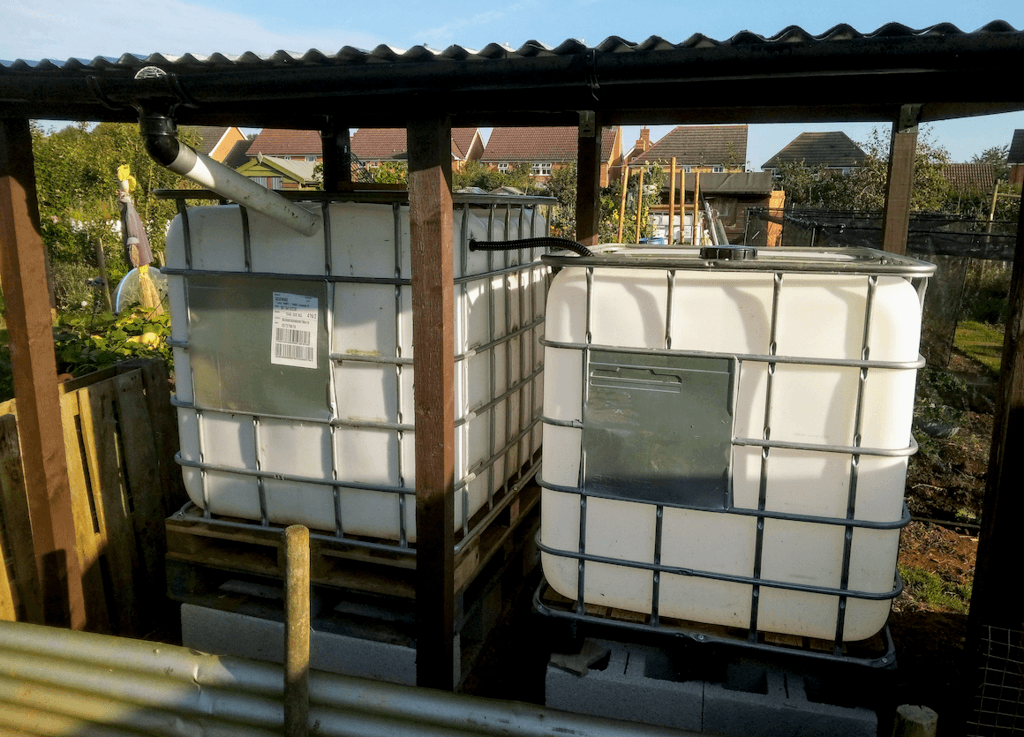On the allotment we are fortunate to have several sources of water. Most of us have our sheds plumbed to water cubes to collect free rainwater throughout the year. We also have Phil’s ‘well to cube’ (W2C) system and as a final source the central standpipe water system. The standpipe water is treated to be of drinkable quality and we all pay for its use. The well water and collected rainwater is free once we’ve built our water capture devices.
Many of us can remember 2018 where we saw record high summer temperatures combined with very low rainfall. Gardening that summer was a real slog as we seemed to spend all our time bringing water from the standpipes to our gardens. This year (2020) we had very low rainfalls in in April and May. As water is so critical to our gardens it makes sense we gather as much rain as possible, especially when rain water is free.
On my plot I decided to dedicate a small unused area to increase my rainwater capture. I have no great DIY skills and no doubt could have done things more simply/ cheaply/ effectively. This is an overview of what I did. The overall structure is 2.4m wide (8’) and 1.8m (6’) front to back. This provides an area similar to a fair size garden shed for collecting rainwater. The structure is a pent style roof about 7’ high at the front and slopes backward to a gutter at the rear.
My set-up has two water cubes at slightly different heights with the higher one receiving rainwater from the roof. When this cube is almost full rainwater will feed into the lower one by gravity. I used six fencing posts, three out front and three at the rear. These were concreted into the ground and linked by timbers tying the fence posts together and supporting a galvanised metal roof. The roof has overlapping metal sheets screwed down onto the rafters.

Here you may see the front and rear posts with linked timber supports and the galvanised roof sloping to the rear. You can also see the white drainpipe linking the rear gutter to the cube and a smaller black hose that’ll convey rainwater into the lower cube.
This part of my plot hadn’t been dug over in a while so the ground was already quite firm and will hopefully support the cubes. I levelled the ground and set out paving slabs overlain by concrete blocks to spread the weight of the cubes and keep the wooden pallet under the cubes as dry as possible. The higher cube has an additional pallet to give it the required height above the lower cube.

Here’s a rear view of the rear of my water capture roof showing the gutter feeding into the higher cube and a black 1” diameter flexible connecting pipe to the lower cube.

Here’s a front view of the completed cubes. I added a brass tap to the right hand cube and if successful will add a similar tap to the left hand cube. Amazon sell a whole range of taps and fittings for these cubes.

Hopefully the roof will survive any autumn/ spring gales and will gather sufficient water to fill both cubes between now (end September) and next spring.
The timber, ready mixed concrete and galvanised roof were bought from William. Hercock at the bottom of Pillings Rd and the guttering came from Wickes. However, all these materials are available from other suppliers. The total cost was around £200 and most labour intensive part was digging holes for, and concreting in, the support posts.
An alternative method would be to use the very strong metal cage around the cube to support a “V” shaped roof draining directly into the cube. This method may be seen on a number of cubes around the allotment and would be cheaper albeit with a slightly smaller capture area. Feel free to drop by my garden and have a look if you are thinking of capturing more rainfall.